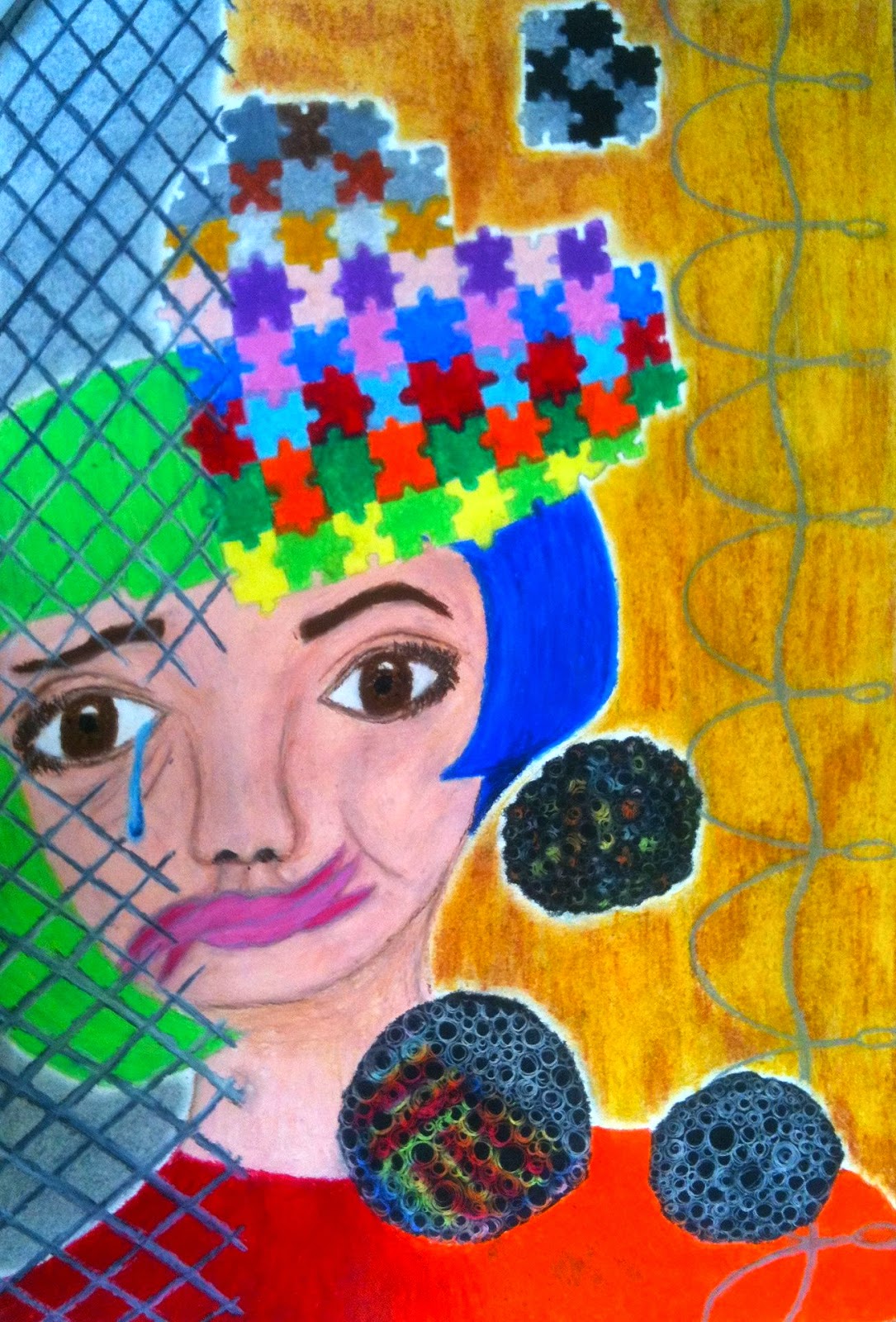Lesson Objective:
Work with the elements of line and space
Work with the art principles of pattern and unity
Create a 3-D composition
Use paper Construction
Key Vocabulary:
Non-objective sculture
Free standing Sculpture
Unity
Materials:
Note Cards in two sizes
Glue
Black Card stock base
Fine point black sharpies
Focus Artist: Sol Lewitt: Pattern and structures
Also study: Revisit: Dongo Artwork to review and connect.
Project requirements:
Drawing is non-objective and shows attention to detail
Drawings incorporate 20 different patterns
Small Group Critique at Midway point
Sculpture is free standing and non-objective
Shows unity through repetition of color and shape.
Assessment:
Informal: Small Group Critique
Formal: Final Grading
CA Art Standards
1.1 Identify and use the principles of design to discuss, analyze, and write about visual aspects in the environment and in works of art, including their own.
1.4 Analyze and describe how the composition of a work of art is affected by the use of a particular principle of design.
2.1 Solve a visual arts problem that involves the effective use of the elements of art and the principles of design.
2.2 Prepare a portfolio of original two-and three-dimensional works of art that reflects refined craftsmanship and technical skills.
Modifications:
English Language Learner: Handout for project, project samples, Power point with visuals, Critique for additional understanding, Demonstration of techniques
Special Needs: Handout for project, project samples, Power point with visuals, Critique for additional understanding, Demonstration of techniques
Accelerated Learner: Expand on skills learned to create a unique project.
Advanced art students will be asked to increase the difficulty of their pattern making and increase the final number of paper rolls from 20 to 30.
Scaffolding adaptations:
Students will see several examples of each art element in different artwork shown in the power point. Notes on the elements of art will be taken throughout discussions for added understanding. Creating each side and Constructing the cube will be demo started in class using guided instruction.
Day 1:
Go Through Power Point Slides
Review: Dango Artwork to connect learning
Discuss Sol Lewitt’s artwork
Interpret line drawings as Principles and elements of design
State Project Objectives, Materials, Project Requirements, Due Dates
Plan ideas for patterns
Day 2-4: Students will create 20 different patterns on 1/2 index cards
Day 3: Art Link: Peer Critique feedback on cards
Focus on Line and pattern
Day 4:
Art Link: Have students draw their ideas for construction
Roll 5 Cards to begin construction on Day 5
Day 5-8: Students will roll and construct sculptures.
Day 6: Peer critique on cards and sculpture progress.
Continue making cards throughout.
Students who work quickly could be asked to create additional patterns on Cards
Students who work slowly will be checked-on regularly with possible adaptations of fewer then 20 notecards.
Last Day of Sculpture:
Art Link: Self Critique:
Describe, Analyze, Interpret and Evaluate. Draw on your notes and the rubric to complete for 10 points.
Complete Rubric and turn in sculpture.
Evaluation: successful for all engaged students and all abilities of students. Wonderful outcome
20 pattern minimum is accomplishable in the 3 days of studio time.











